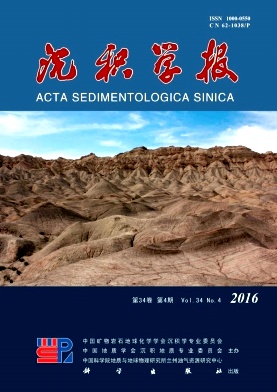Using High Resolution Sequence Stratigraphy to Study the Framework of Sand-rich Strata and Predict the Sweet Spots of Reservoir: Taking Xujiahe Formation in Hechuan area, Sichuan Basin as example
doi: 10.14027/j.cnki.cjxb.2016.04.016
- Received Date: 2016-03-14
- Accepted Date: 2016-04-19
- Rev Recd Date: 2016-04-19
- Publish Date: 2016-08-10
-
Key words:
- tight oil and gas /
- palaeogeomorphology /
- high resolution sequence stratigraphy /
- base level cycle /
- reservoir sweet spot /
- Xujiahe Formation /
- Hechuan area /
- Sichuan Basin
Abstract: The prediction of the sweet spots of sand-rich tight sandstone reservoir has been both important and difficult in the field. This paper, taking the 2nd member of Xujiahe Formation in Hechuan, Central Sichuan Basin as an example, explores this issue by employing high resolution sequence stratigraphy controlled by successive palaeogeomorphology. Based on the recovery of the karst ancient landform of Leikoupo Formation before the 2nd Member of Xujiahe Formation deposition, it is suggested that the sedimentary filling was controlled by successive karst ancient landform, and the formation filling pattern where the sand bodies in the 2nd Member of Xujiahe Formation overlapped highland on the periphery gradually. With the guidance of this pattern and high-resolution sequence stratigraphy, by identifying sequence boundary and flooding surface types in varying degrees and integrating seismic, logging and core data, the 2nd Member of Xujiahe Formation is divided into 1 long-term base-level cycle which includes 6 mid-term base-level cycles, namely MSC1 to MSC 6. Overall, MSC1-MSC3 are characterized by the development of retrogradational braided river delta that overlaps southeastwards and is identified as rising semi-cycle; it switches to descending semi-cycle in the maximum flooding surface in MSC4; MSC4-MSC6 are characterized by the development of progradational braided river delta, with the particle size gradually becoming coarser upwards. Taking MSC3, the most informative cycle, as an example, the correlation between ancient land form, sequence thickness, sand body thickness, sand body physical property and sweet spot distribution is established and the sweet spot distribution areas of favorable reservoirs are predicted. The insights and methods indicated in the paper are of reference value for the study of sand-rich tight sandstone reservoirs, and particularly the study of areas with thinly scattered well network, informative seismic data but limited resolution. Some findings can be directly applied to regional oil & gas exploration and development.
| Citation: | ZHONG Yuan, LIU Hong, TAN XiuCheng, LIAN ChengBo, LIAO JiJia, LIU MingJie, HU Guang, CAO Jian. Using High Resolution Sequence Stratigraphy to Study the Framework of Sand-rich Strata and Predict the Sweet Spots of Reservoir: Taking Xujiahe Formation in Hechuan area, Sichuan Basin as example[J]. Acta Sedimentologica Sinica, 2016, 34(4): 758-774. doi: 10.14027/j.cnki.cjxb.2016.04.016 |






 DownLoad:
DownLoad: